Compound Exercises: Everything You Need to Know + 6 Exercises
Do you want to workout several muscles at a time? Then, you should go for compound exercises.
All the exercises you do at a gym or at home are usually divided into two groups: compound exercises and isolation exercises. In this article, we will explain what compound exercises are and what benefits they have.
What Are Compound Exercises?
Compound exercises are multi-joint movements that engage several muscles, muscle groups or joints at once.
They help you improve your overall muscle coordination, functional strength, and athletic ability. Pretty much all the key lifts that first come to mind when you think about hitting the gym, such as squats, deadlifts, bench presses, are compound exercises.
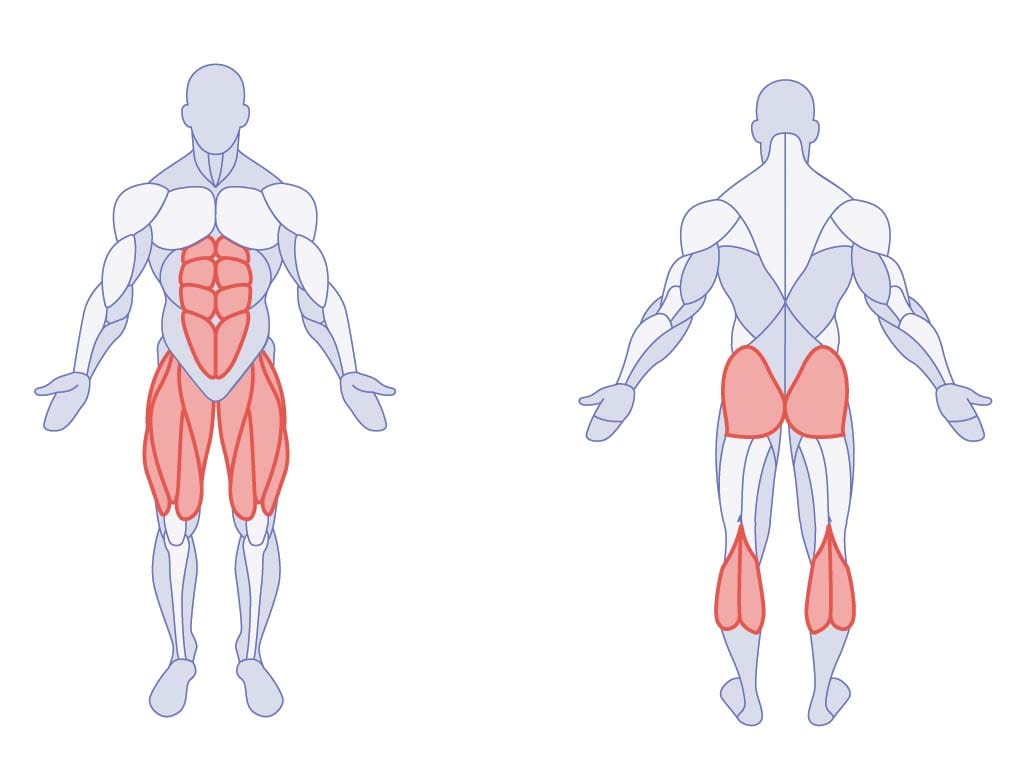
They’re a time-efficient way to get in a full-body workout in a shorter time period.
On the other hand, we have isolation exercises, which are the moves that target specific muscles. They are as beneficial as compound exercises and personal trainers usually add both exercises to your workout routine.
Compound vs. Isolation Exercises Comparison
- Total Impact: Compound exercises build overall strength and functional fitness. On the other hand, isolation exercises are ideal for targeting specific muscles and refining muscle definition.
- Workout Plan: Compound exercises are typically your foundation in a workout routine. Isolation exercises you throw in to serve specific muscle needs and imbalances.
- Training Goals: If you want to build general strength, muscle mass, and efficiency, compound exercises should be your main go-to. For muscle symmetry, addressing weaknesses, and in-depth work on certain muscles or struggle areas, isolation exercises are helpful.
Remember, picking between compound vs. isolation exercises doesn’t have to be a “one or the other” choice; you can (and should) do both!
Let’s continue on and break down how to do the simplest and most beneficial compound exercises for defining your overall strength.
6 Best Compound Exercises
These guys are your foundational moves: the crème de la crème of gym going.
Here are six of the best compound exercises:
#1 Squats
It’s the 'king of exercises' for a reason! Squats are where you’ll likely be lifting some of your heaviest weight. There are several squat variations you can choose based on your level. Here, we explain the squats with barbell.
Engaged Muscles: Quadriceps, hamstrings, glutes, lower back, and core.
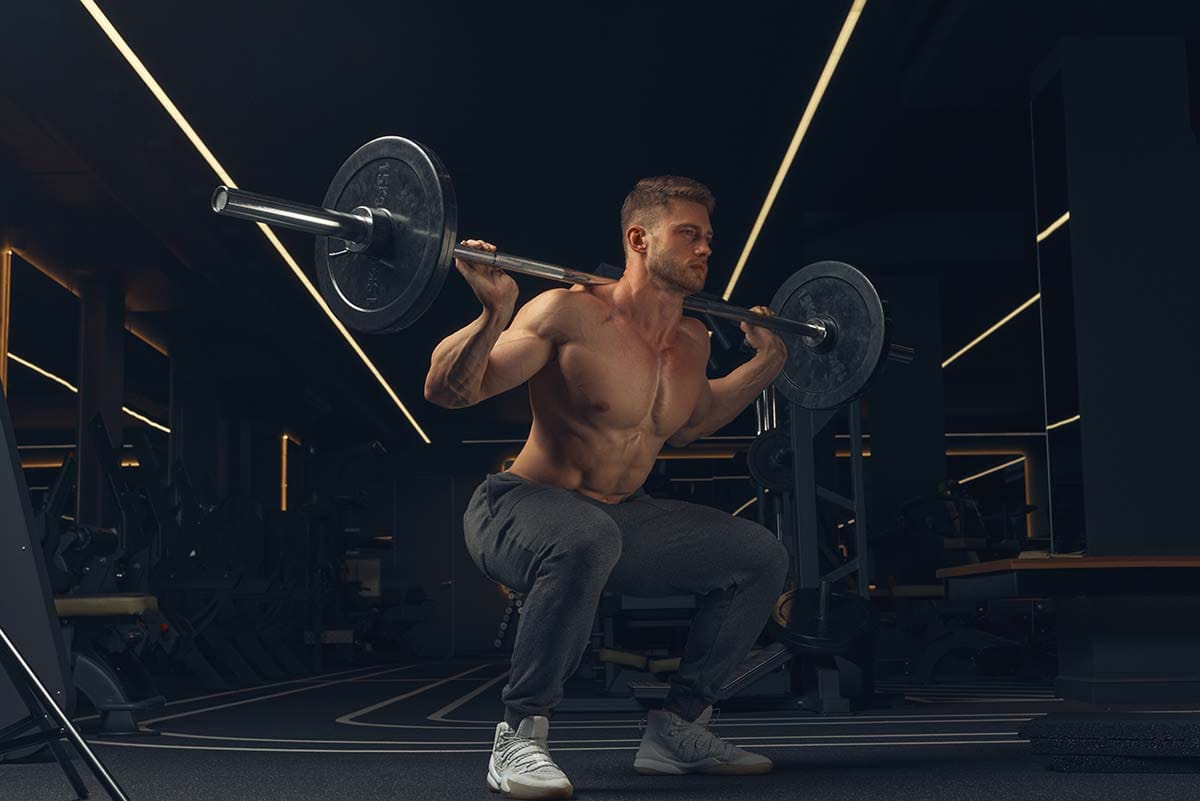
- Set-Up: Stand with your feet shoulder-width apart or slightly wider. Point your toes out slightly at around a 15-degree angle. Engage your core muscles and keep your spine neutral. Hold your chest proud.
- Equipment: Place a loaded barbell across your upper back. The bar should sit across the tops of your trapezius muscles. Grip the bar with your hands facing forward. Keep them slightly wider than shoulder-width apart.
- Squat: Hinge from your hips as you bend your knees. Think about making the motion of dropping back to sit on a chair. Keep your weight on your heels and lower your body down until your thighs come to a 90-degree angle with your shins. Make sure your knees are tracking in line with your toes and that they don’t knock inward.
- Reverse: Drive out of your heels, and push the floor away from you to come back up. At the top of the move, extend your hips and squeeze your butt slightly.
- Reps: Beginners should aim for 3 sets of 10 reps. If you’re squatting for strength, aim for 3 sets of 3-6 reps or try a one-rep max with heavy weight. If you’re squatting for hypertrophy, aim for 3 sets of 8-12 reps.
As mentioned, squats engage multiple muscles, it is one of the best compound leg exercises, but do squat work calves? Read the article to know more about this important move.
#2 Deadlifts
Muscles Worked: Hamstrings, glutes, lower back, traps, and core.
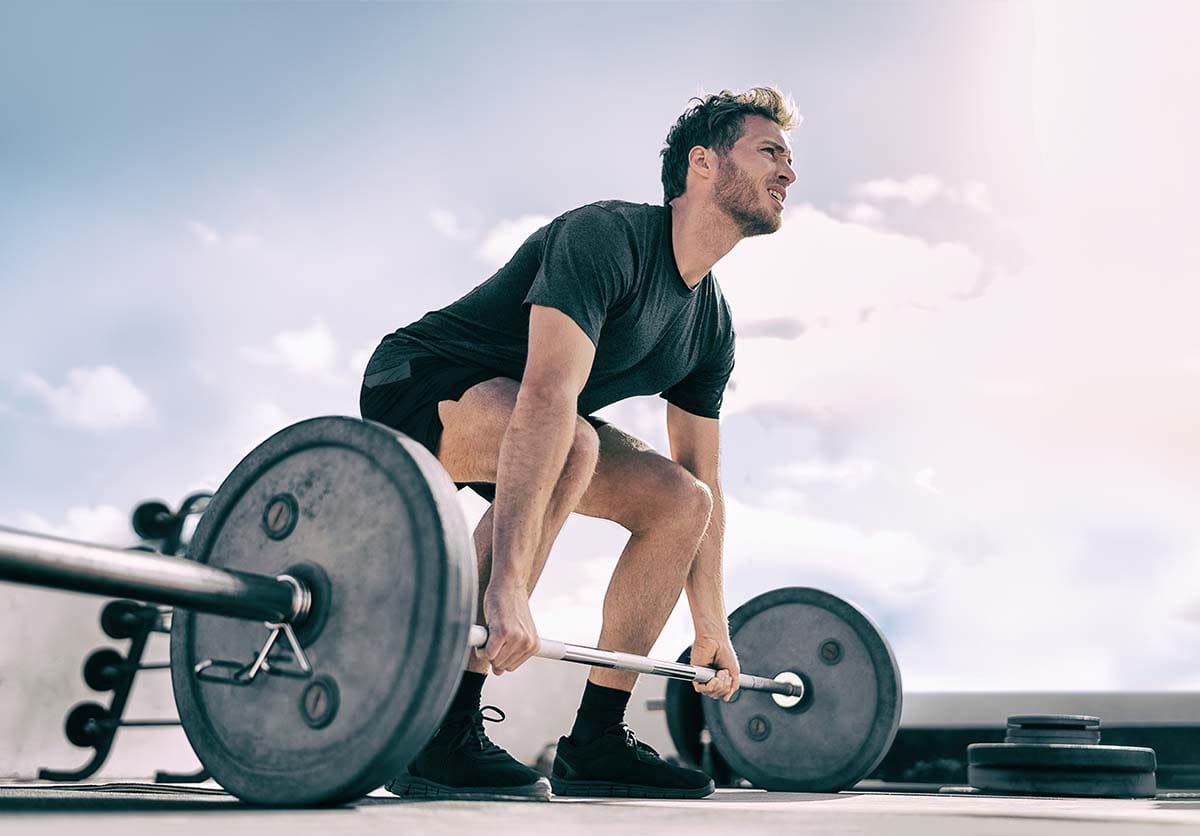
- Set-Up: Load up a barbell with heavy weight. Set it on the ground in front of you.
- Body Position: Keep your feet slightly wider than shoulder-width apart with a slight bend in your knees and a straight back. Engage your core muscles. You will want to grab the barbell with an overhand (pronated) grip unless you specifically train this lift underhand.
- Action: Hinge from your hips to grab your loaded barbell. Straighten your legs and drive your hips forward to come to stand. This is your starting position. From here, begin to lower the barbell down your shins toward the ground for your first rep, thinking about sliding your weight down the front of your legs. Continue moving until your bar comes just over your mid-foot.
- Reverse: From here, swiftly drive your hips forward again to come back to the starting position. This completes one rep.
- Reps: 3-4 sets of 8-12 reps.
Deadlift is one of the top compound core exercises you can do at gym.
#3 Bench Press
Muscles Worked: Chest, shoulders, triceps, and core.
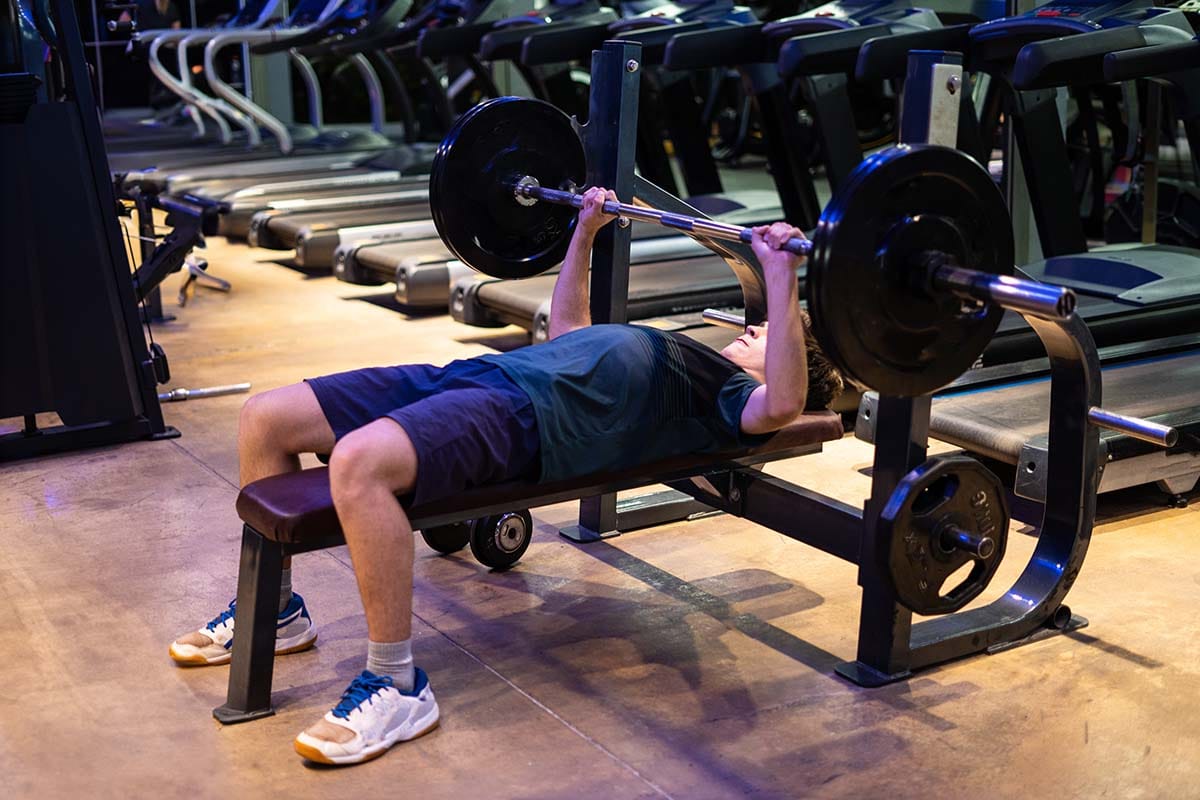
- Set-Up: Set up a weight bench in a flat position. Load your weight plates onto your barbell or grab your dumbbells. Plant your feet firmly on the floor. Keep your feet wide and slightly turned out. This move will help you push through your legs and generate more power and strength.
- Body Position: Arch your back slightly. Using an overhand grip, place your barbell firmly in your palms. You want to make sure your barbell doesn’t slip towards your fingers. This will draw your hands back, forcing you to cock your wrists backward so you lose power and stability.
- Press: Push your back onto the bench and unrack your barbell, bracing your core.
Inhale and slowly bend your elbows to lower your barbell towards your chest. Think about “bending the bar.” This will help you keep your elbows tucked in to save your shoulders from injury.
Bring the bar to your chest. Here, your elbows should be bent at about 90 degrees. Do not let the weight rest or drop onto your chest, just hover it slightly above. Aim for the middle of your chest.
- Reverse: Exhale to forcefully push your barbell back over top of you. Remember to drive through your feet and legs and keep your core engaged for power.
- Reps: This completes one rep. Continue as needed. Beginners should try 3 sets of 10 reps. If you are aiming for hypertrophy, try 8-12 reps per set. Those lifting heavy should perform 3 sets of 5-6 reps. If you are trying for a one-rep max (only one rep of the heaviest weight you can cleanly lift), always have a spotter at your side.
If you use dumbbells, bench press is one of the best compound exercises with dumbbells.
You might think which equipment to use for performing this exercise. Check out the barbell vs dumbbell bench press to discover which is better for your body.
#4 Pull-Ups/Chin-Ups
Muscles Worked: Back, biceps, shoulders, and core.
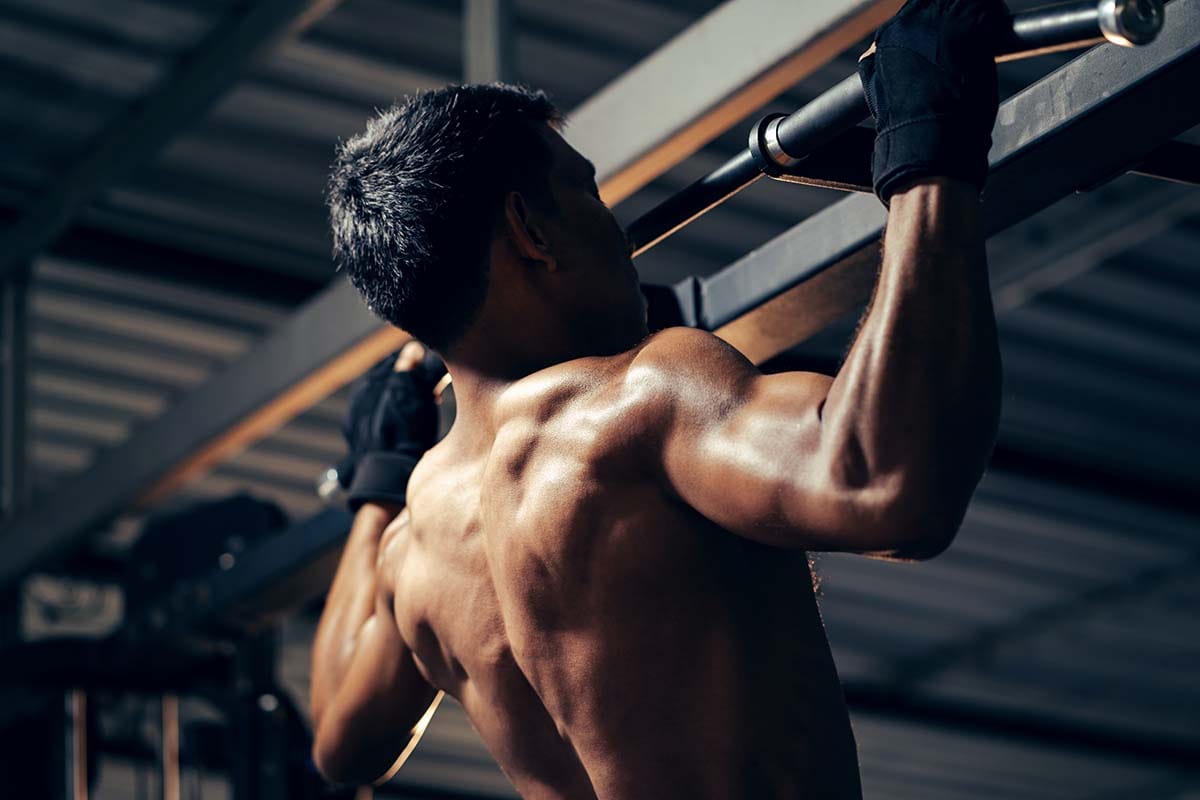
- Set-Up: Find a pull-up bar or use the top of a power tower. Preferably, you want to find a station that offers you a set of perpendicular high bars with no parallel bar in the middle.
- Grip: Once you find your station, lift your arms. Twist your palms inwards to face one another. Grasp the handles firmly. Brace your core muscles with your arms extended.
- Activation: Driving out of your back and shoulders, bend your elbows and activate your forearms to lift your body up and off the ground.
- Elevation: Keep your chest proud. Continue to follow through the movement until your chin comes into a line with your fists. Pull up slightly further through the chest. Aim to make contact with your chest to where the bar would hypothetically sit.
- Descent: Hold this position for a moment at the top. Next, slowly start to extend your elbows and lower your body back down to the starting position.
Be careful here not to drop or dump into your shoulders. If you don't control the movement here, you risk shoulder injuries on the eccentric (the “down”) part of the move.
If you are not still ready to do pull-ups, you can try other compound bicep exercises.
#5 Overhead Press
Muscles Worked: Shoulders, triceps, upper chest, and core.
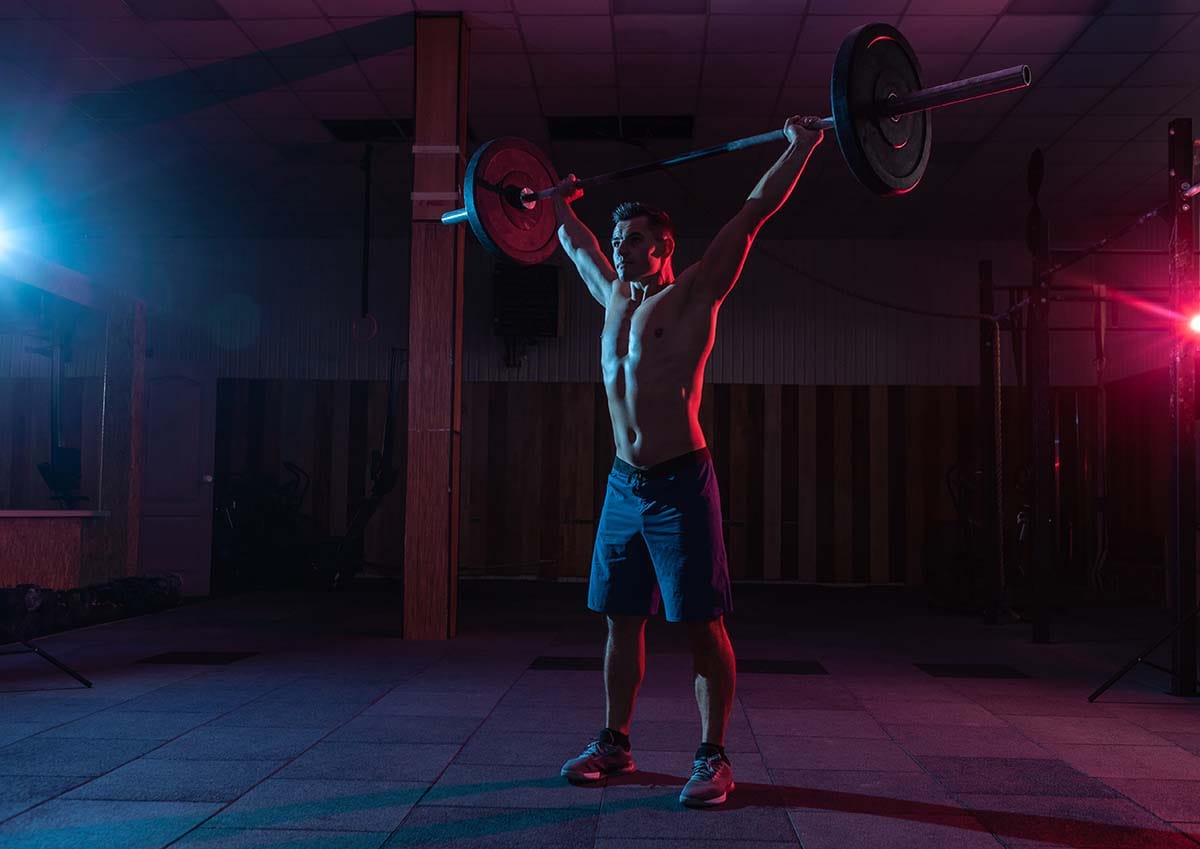
- Set-Up: From a squat rack, load a comfortable weight onto your barbell. Approach the barbell and unrack it, resting it across your collarbones and the tops of your shoulders.
- Body Position: Keep a solid grip on the barbell. Your palms should be facing away from you (overhand grip) and your elbows should be bent to support the barbell. Separate your feet so that they are hip-width apart. Consider bringing your feet slightly wider than this or point your toes out at a 15-45-degree angle if it feels more comfortable.
- Action: Engaging your core, drive the barbell upward, using your shoulder and upper body strength to bring it to an overhead position. Straighten your arms, but do not lock the elbows out.
- Reverse: Hold for a short pause, then slowly, and with control, lower your barbell back to the collarbones.
- Reps: Repeat as needed.
If you want to focus on your chest and do more exercises to build your upper body, the kettlebell chest exercises can be perfect.
#6 Push-Ups
Muscles Worked: Chest, biceps, triceps, shoulders, and core.

- Set-Up: Start in a plank position with your hands slightly wider than shoulder-width apart.
- Body Position: Your body should form a straight line from head to heels, with fully extended arms.
- Action: Bend your elbows and lower your body toward the ground. Keep your elbows pointing backward as you do this. This will help you prevent shoulder injuries. Hold your body straight and don’t let your hips sag below the rest of your body or stick your butt up in the air. Doing either takes away from your core engagement. Lower yourself until your chest is just above the ground. Here, your elbows should be at 90 degrees.
- Reverse: Push through the palms of your hands to extend your arms and bring your body back to the starting position using your strength. Keep your body straight throughout the movement.
- Reps: Newbies should try 3-4 sets of 8-12 reps. Perform your push-ups from the knees if you are a total beginner to this exercise.
Push ups is one of the best compound chest exercises that doesn't require any equipment, so you can do it wherever you are.
All these exercises are foundational components of many strength training programs. If you practice anything from the bro split to PHUL(Power Hypertrophy Upper Lower) to PHAT workouts, you can be sure you’ll see a ton of compound exercises packed in there!
These moves are ideal for beginner to advanced weightlifters.
Scale them up or down in intensity and volume to match your level of fitness and training goals.
Benefits of Compound Exercises
So now that you’ve got a few of the best compound exercises for muscle building in your back pocket, take a look at the impact they can have on your body, your overall health and even your schedule
Efficiency and Time-Saving
Work Your Full Body in One Go: Because you work several muscle groups at once, compound workouts allow for a more comprehensive workout in less time. For example, a squat targets your quads, hamstrings, glutes, and core.
Workout Density: By incorporating compound exercises, you can achieve a full-body workout in fewer exercises, making it ideal for those with limited time.
Functional & Athletic Strength
Real-World Use:: Compound movements aren’t only great in the gym— these are moves for life!
Your basic compound lifts mimic everyday activities and sports-related movements. These can enhance your functional strength and general coordination. For example, deadlifts help your lifting mechanics and overall back strength. These are both essential for everyday tasks like lifting your grocery bags.
Athletes can also gain a competitive edge from functional movement patterns. When we lift, throw, swing, or jump in a sports game, we’re typically working across many muscles and joints in the blink of an eye.
This can be high-stakes if you’re in a crucial match in your season!
Training moves that simulate sports actions will help you perform better, whether you’re on the pitch, the court, or the field.
Balance and Stability: These exercises require your body to stabilize itself. This helps improve your balance and core strength to stop injuries both in and out of the gym.
Muscle Growth and Healthy, Happy Hormones!
Muscle Activation: Finally, engaging multiple muscle groups at once is great for your overall muscle activation capacity. It helps you grow stronger and make significant muscle gains too.
Hormonal Benefits: Your hormones can benefit from workouts with compound exercises. They help your body stimulate the release of growth hormones and testosterone more effectively than isolation exercises.
Hormonal responses and adaptations to resistance exercise and training can help support muscle growth, fat loss, and overall physical development.
Big Picture
To sum things up, while isolation exercises have their place in targeting specific muscles and addressing imbalances, compound exercises offer more well-rounded benefits. This makes them a cornerstone of effective strength training and fitness programs.
Try it for yourself: work on both types of exercises and see which ones you love the most!
It’s good to have an arsenal of exercises with a blend of compound exercises and isolation.
References
Kraemer, W. J., & Ratamess, N. A. (2005). Hormonal responses and adaptations to resistance exercise and training. Sports medicine (Auckland, N.Z.), 35(4), 339–361. https://doi.org/10.2165/00007256-200535040-00004
Paoli, A., Gentil, P., Moro, T., Marcolin, G., & Bianco, A. (2017). Resistance Training with Single vs. Multi-joint Exercises at Equal Total Load Volume: Effects on Body Composition, Cardiorespiratory Fitness, and Muscle Strength. Frontiers in physiology, 8, 1105. https://doi.org/10.3389/fphys.2017.01105
Related articles


Get fit with Flex
Build muscle & lose weight fast for free.
Available on iPhone + Apple Watch





